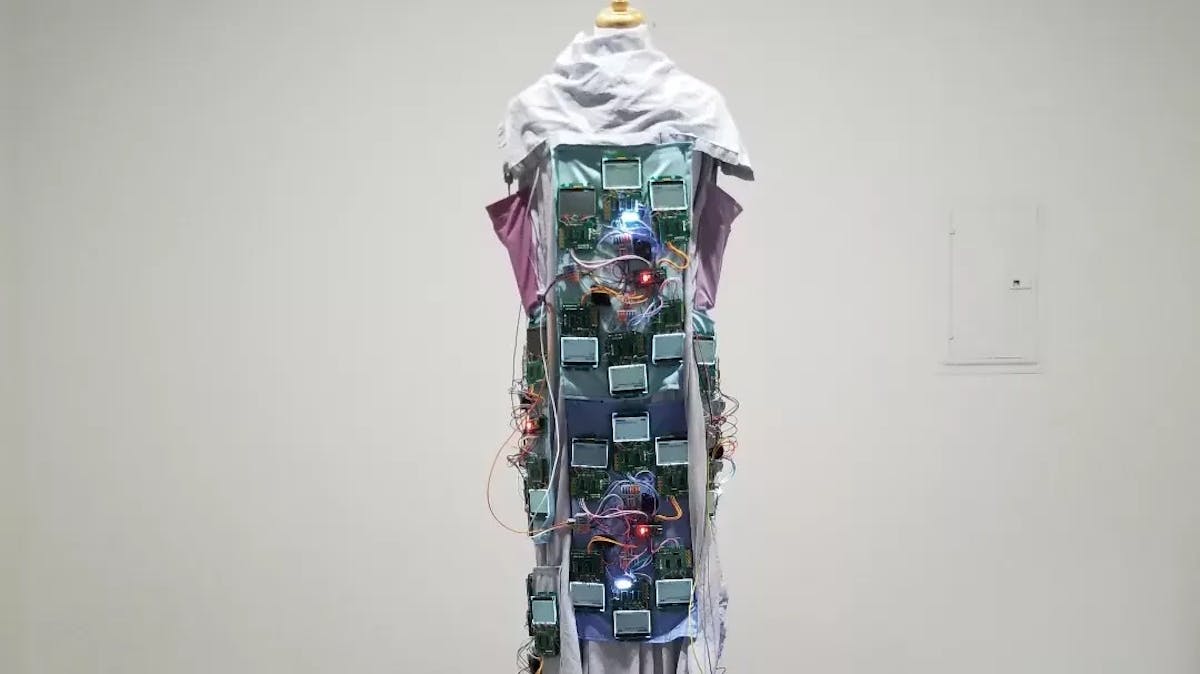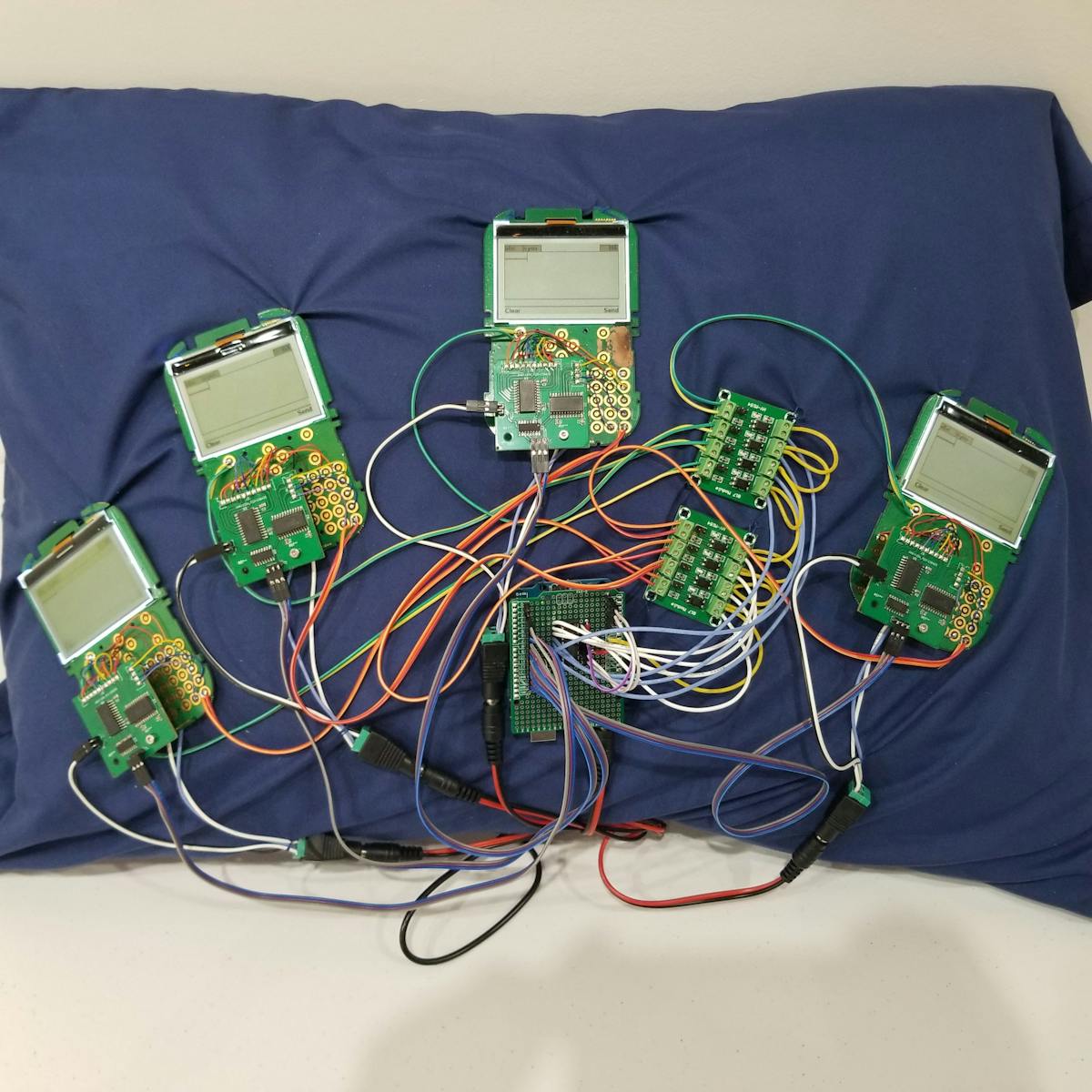This Bizarre Wearable Sculpture Incorporates Student Clickers
Eddie Farr created this wild wearable sculpture covered in the things.

If the height of technology during your school career was colorful iMac G3 computers and TI-83 calculators, then you may not be aware of how much things have changed. Digital whiteboards, educational apps, and student response systems abound. The latter, often called "clickers," are handheld devices that introduce a layer of interactivity, letting students answer questions in real time during lessons and quizzes. Old sets of clickers are dirt cheap, which is why Eddie Farr was able to create this bizarre wearable sculpture covered in the things.

We aren't quite sure how to describe this project, because "art piece" doesn't really do it justice. It is a garment like a sari, robe, or cloak. Attached all over its exterior are the circuit boards from a lot of 150 ActivExpression 2 clickers that Farr purchased on eBay for about $80 (after shipping costs). Each of them cycles through a process of typing random characters and then clearing the screen. Maybe this makes some sort of philosophical statement about the nature of modern education and the workload placed on teachers; or maybe it is just something interesting to do with a bunch of cheap clickers.
To even access the interface of a clicker, it needs to receive an activation signal from the central hub. In a classroom, the teacher would access that through their PC. Farr had to do it by running the ActiveInspire software on a Windows 7 virtual machine running on a 2012 Apple Mac Mini.
With the ability to send activation signals, Farr could type on every device. But he needed a way to make them type autonomously, so he connected them to a bunch of Arduino Nano R3 development board. Each Arduino controls six clickers by activating their buttons through shift registers on custom PCBs. The Arduino boards do that randomly, so the text that shows up on the clicker screens is complete gibberish. The Arduinos also emit chirps through piezo speakers to add to the general chaos.
Farr theorizes that ChatGPT could enhance this project by generating coherent text instead of gibberish. But even as it is, the piece (dubbed "Wake Up and Scream") certainly makes a statement — though we're still not sure exactly what statement that is.
Writer for Hackster News. Proud husband and dog dad. Maker and serial hobbyist. Check out my YouTube channel: Serial Hobbyism


